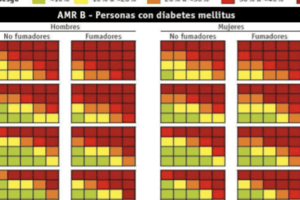Podcast
Questions and Answers
Qual é o objetivo principal da avaliação de riscos?
Qual é o objetivo principal da avaliação de riscos?
- Avaliar a eficácia de medidas preventivas já implementadas
- Identificar e priorizar potenciais perigos ou riscos (correct)
- Determinar a gravidade de um dano já ocorrido
- Implementar medidas preventivas em uma situação
Quais são os passos típicos envolvidos no processo de avaliação de riscos?
Quais são os passos típicos envolvidos no processo de avaliação de riscos?
- Avaliação, identificação, ranking de riscos e implementação de medidas correctivas
- Identificação, avaliação, ranking de riscos e implementação de medidas preventivas (correct)
- Identificação, avaliação, classificação de danos e ranking de riscos
- Identificação, avaliação, ranking de riscos e avaliação de danos
Por que a avaliação de riscos é fundamental em various campos?
Por que a avaliação de riscos é fundamental em various campos?
- Porque é um requisito legal em muitos campos
- Porque é um processo rápido e barato
- Porque ajuda a entender a probabilidade de dano
- Porque permite a implementação de medidas preventivas eficazes (correct)
O que é feito durante a fase de avaliação da avaliação de riscos?
O que é feito durante a fase de avaliação da avaliação de riscos?
Qual é o resultado final do processo de avaliação de riscos?
Qual é o resultado final do processo de avaliação de riscos?
Por que é importante priorizar os riscos?
Por que é importante priorizar os riscos?
Quais são as medidas de controle de risco implementadas para mitigar ou eliminar os riscos identificados?
Quais são as medidas de controle de risco implementadas para mitigar ou eliminar os riscos identificados?
Quais são os tipos de medidas preventivas que podem ser implementadas?
Quais são os tipos de medidas preventivas que podem ser implementadas?
Qual é o objetivo das medidas preventivas?
Qual é o objetivo das medidas preventivas?
O que é o tromboembolismo venoso (VTE)?
O que é o tromboembolismo venoso (VTE)?
Qual é o papel dos modelos de avaliação de risco computadorizados no caso de VTE?
Qual é o papel dos modelos de avaliação de risco computadorizados no caso de VTE?
Por que são importantes a avaliação de risco e as medidas preventivas?
Por que são importantes a avaliação de risco e as medidas preventivas?
Flashcards are hidden until you start studying
Study Notes
Risk assessment and preventive measures are essential components in a wide range of fields, from healthcare and workplace safety to environmental management and beyond. These two concepts are closely intertwined, as risk assessment serves as the foundation for determining appropriate preventive measures. In this article, we will discuss the key aspects of risk assessment and preventive measures, highlighting their importance and the strategies used to implement them effectively.
Risk Assessment
Risk assessment is the process of identifying, evaluating, and prioritizing potential hazards or risks in a given situation. This process helps organizations and individuals to understand the likelihood of harm occurring and the potential severity of that harm. Risk assessment is typically carried out using a systematic approach, which involves the following steps:
-
Identification: This stage involves recognizing potential hazards or risks. This could be anything from occupational hazards in a workplace to environmental risks in a community.
-
Evaluation: Once hazards have been identified, they are evaluated based on their potential severity and likelihood of occurrence. This helps to prioritize risks and determine which ones require immediate attention.
-
Risk ranking: The next step is to rank the risks based on their potential severity and likelihood of occurrence. This ranking helps to prioritize risks and allocate resources accordingly.
-
Risk control: Finally, risk control measures are implemented to mitigate or eliminate the identified risks. These measures could include safety protocols, training programs, or the implementation of safety equipment.
Preventive Measures
Preventive measures are the actions taken to mitigate or eliminate risks identified through the risk assessment process. These measures are designed to prevent harm from occurring or to reduce the severity of the harm if it does occur. Preventive measures can be categorized into the following types:
-
Engineering controls: These are physical modifications to the environment or processes to reduce risks. For example, installing safety barriers in a workplace or designing safer equipment.
-
Administrative controls: These are policies, procedures, and training programs that help to prevent risks. For example, implementing a safety policy or providing safety training to employees.
-
Personal protective equipment (PPE): These are items worn by individuals to protect them from risks. For example, wearing a hard hat in a construction zone or using safety goggles in a lab.
-
Procedural controls: These are specific procedures or protocols that help to prevent risks. For example, implementing a checklist to ensure that all safety procedures are followed.
Case Study: Venous Thromboembolism (VTE) Prevention
Venous thromboembolism (VTE) is a serious condition that can lead to blood clots in the veins, potentially causing life-threatening complications. To prevent VTE, healthcare providers conduct risk assessments to determine the likelihood of a patient developing VTE and provide appropriate preventive measures. Computerized risk assessment models have been developed to support healthcare providers in this process, helping them to identify patients at risk and provide tailored prevention strategies.
Conclusion
Risk assessment and preventive measures are crucial components of a wide range of fields, from healthcare and workplace safety to environmental management and beyond. By understanding the importance of these concepts and implementing effective strategies, organizations and individuals can work towards creating safer and healthier environments for everyone.
Studying That Suits You
Use AI to generate personalized quizzes and flashcards to suit your learning preferences.




